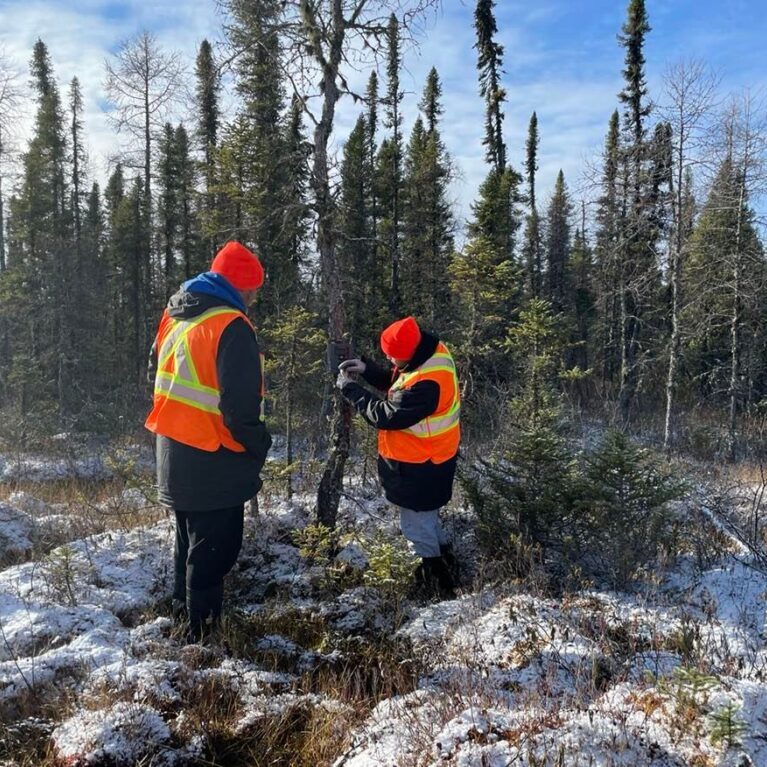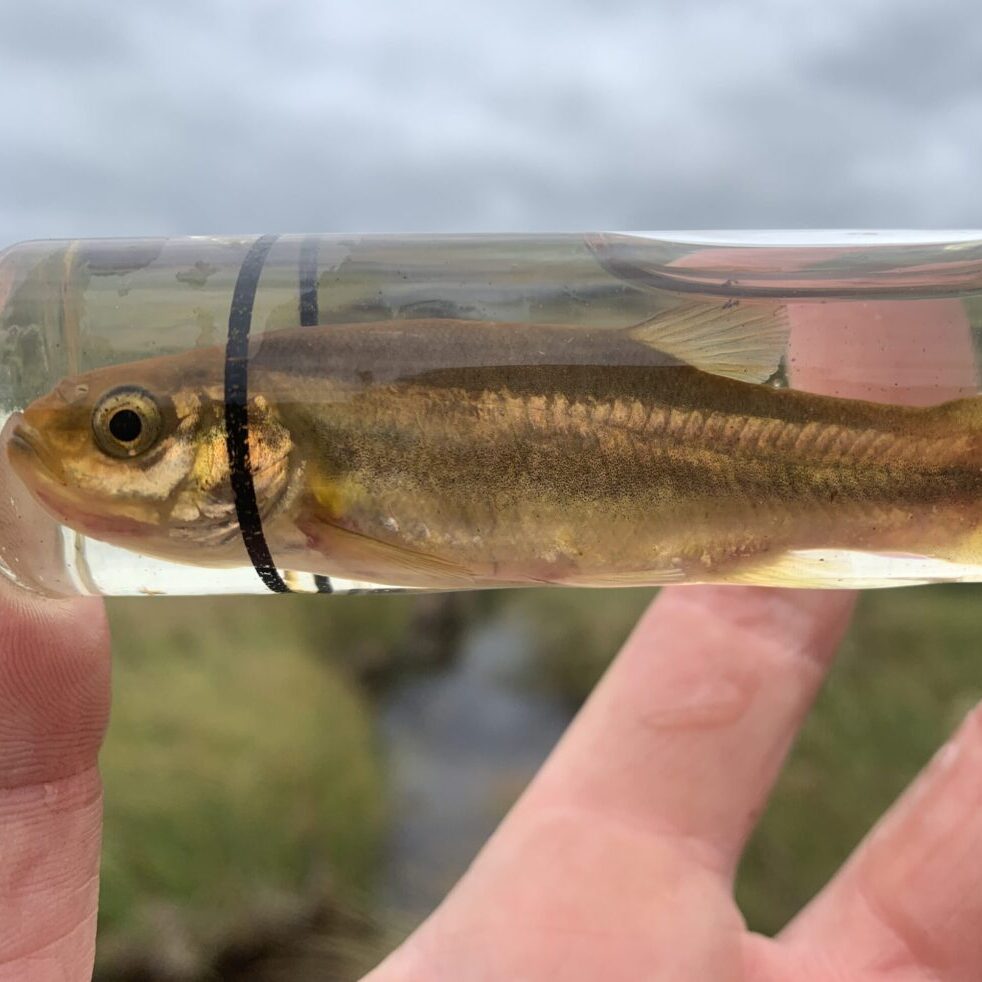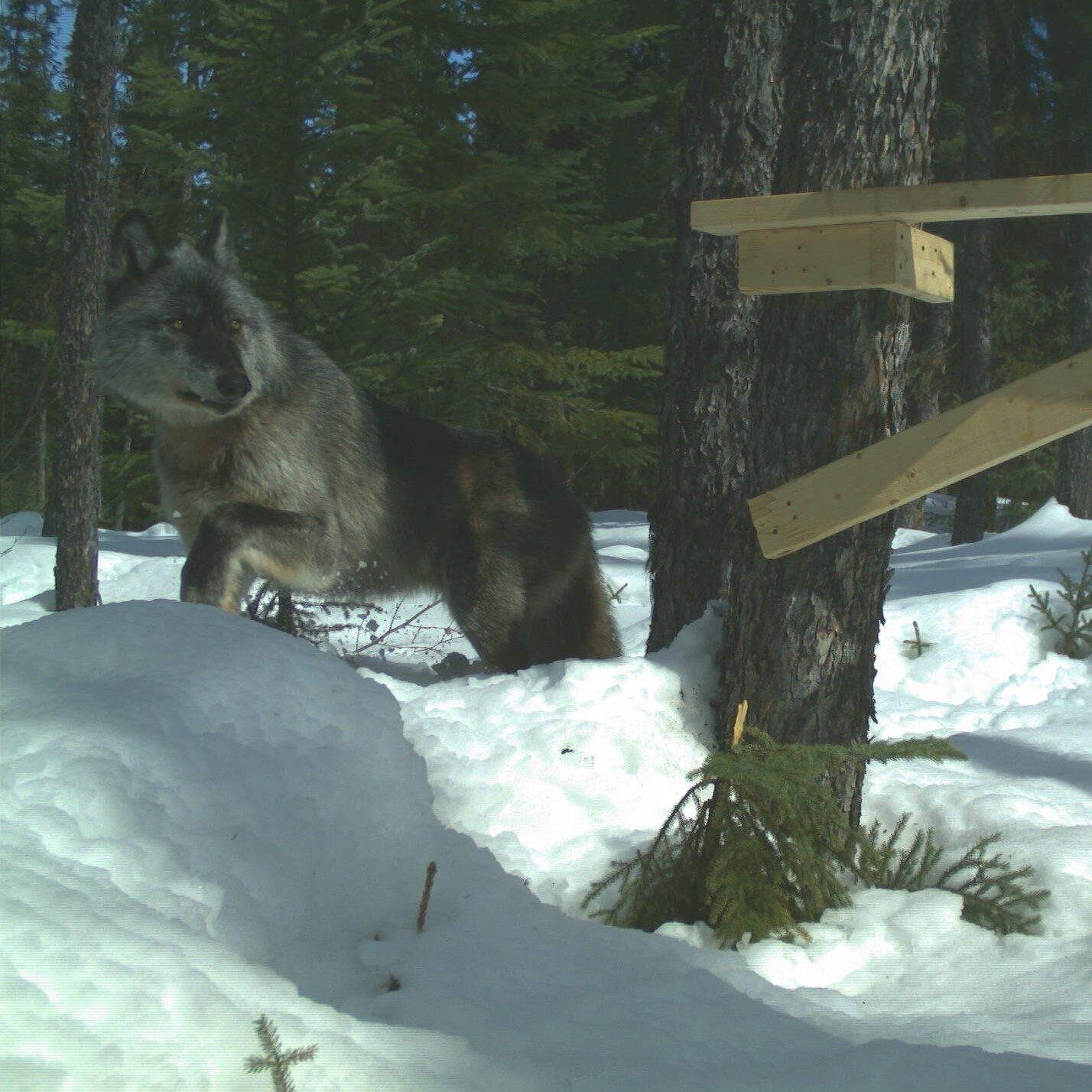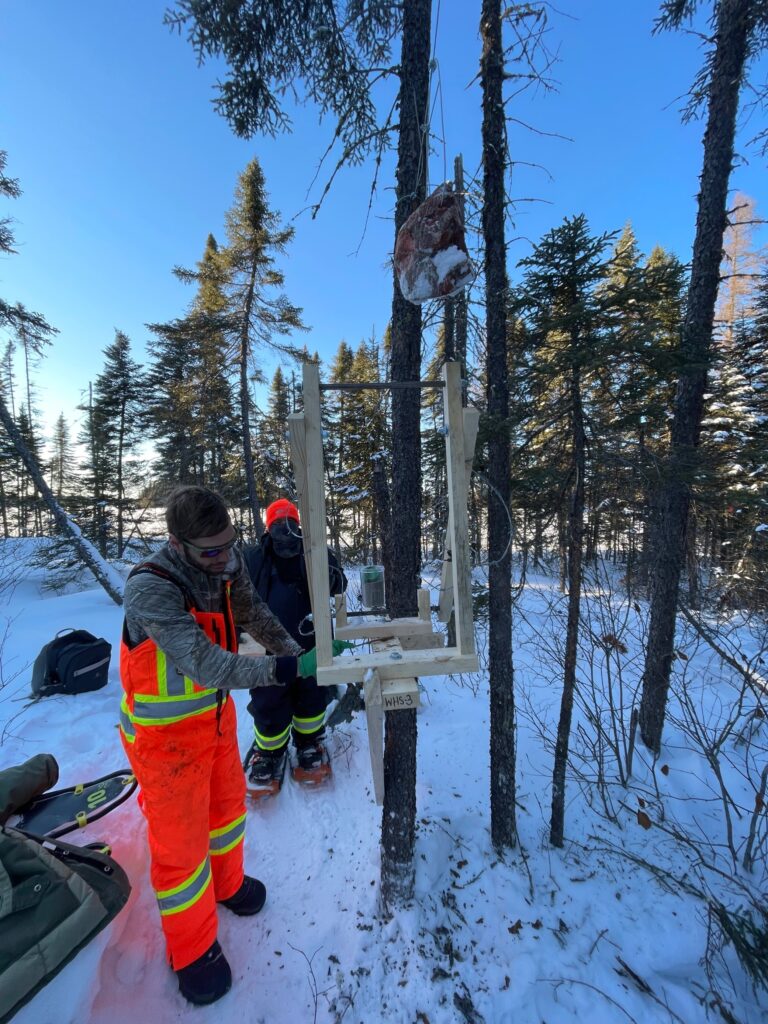The Project area crosses multiple watersheds and over 100 waterbodies. These typically drain towards James Bay. Surface water readings and fish and fish habitat assessments are ongoing in the Project area.
Winter snow tracking and motion sensitive camera monitoring are ongoing for furbearers and ungulates, and hair snag surveys are ongoing for wolverine. Thirty wildlife remote cameras were installed in 2021 on active game trails and natural features such as creek banks or habitat edges. The remote cameras have captured various species including wolverine, Canada lynx, gray wolf and pine marten. We have seen caribou in group sizes up to ten animals, including calves, in the Local Study Area during the winter aerial ungulate survey.
Bird indicator data will be collected using a combination of methods including point count surveys, autonomous recording units (ARUs), marsh bird call playback surveys, species-specific surveys, and aerial surveys.
Environmental Monitors from Marten Falls First Nation have been of great assistance to the field teams, providing invaluable knowledge and support.
More data will become available in 2023.
Watch videos about what we’re studying and share your feedback through Discussion Guides.




